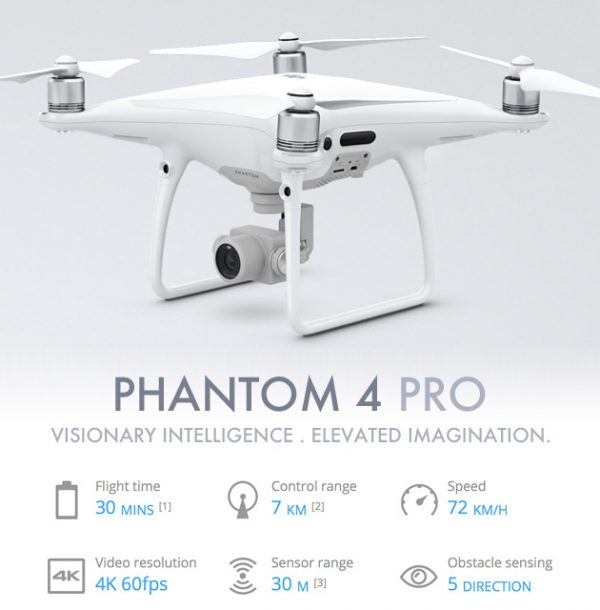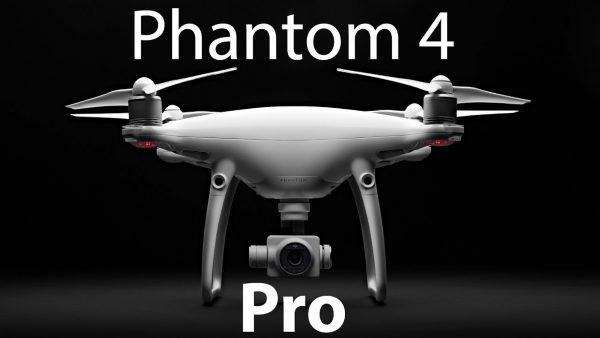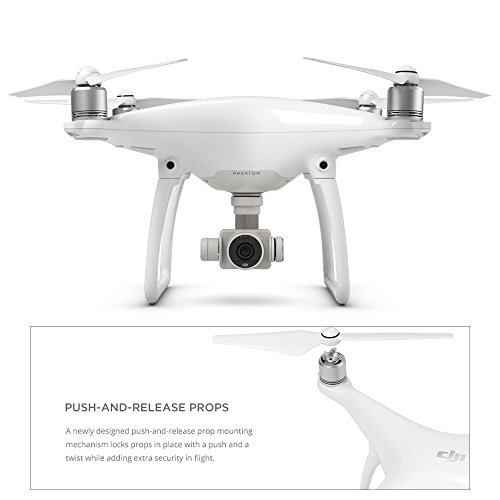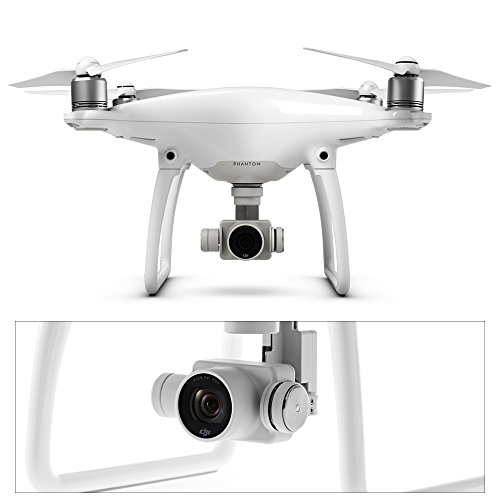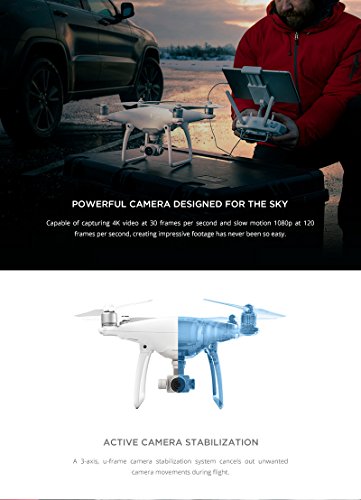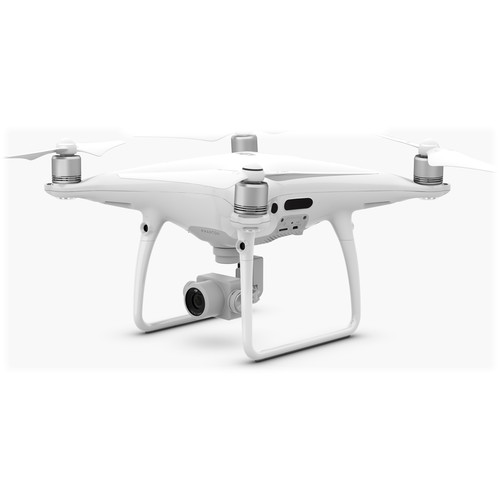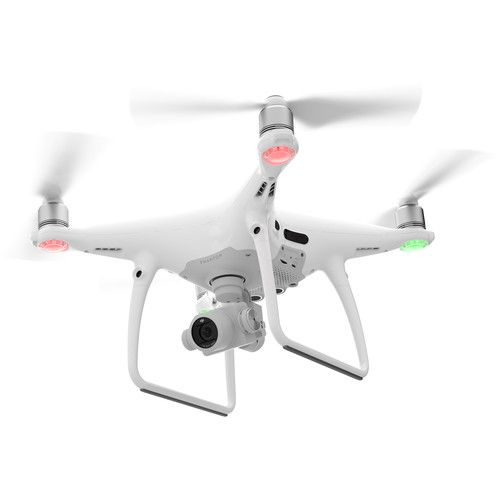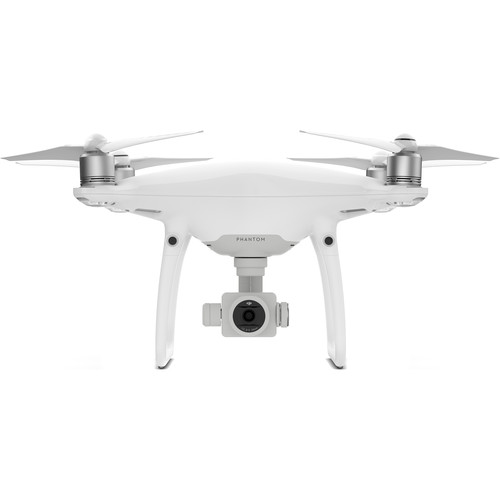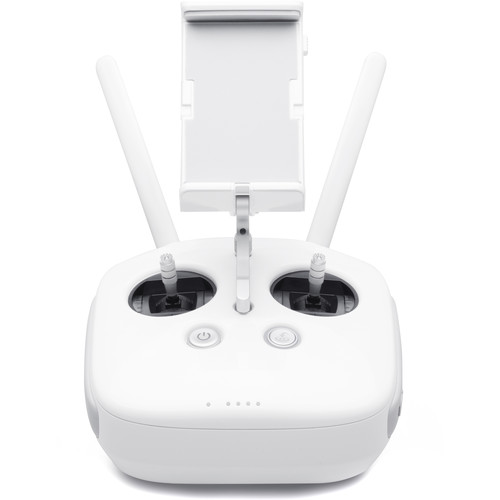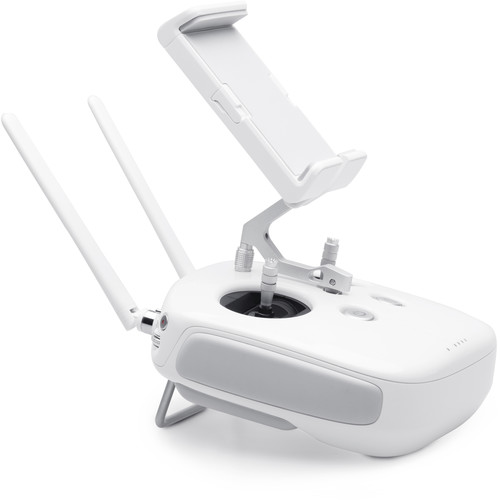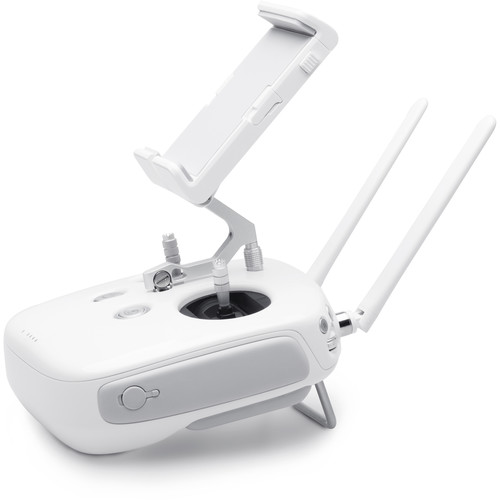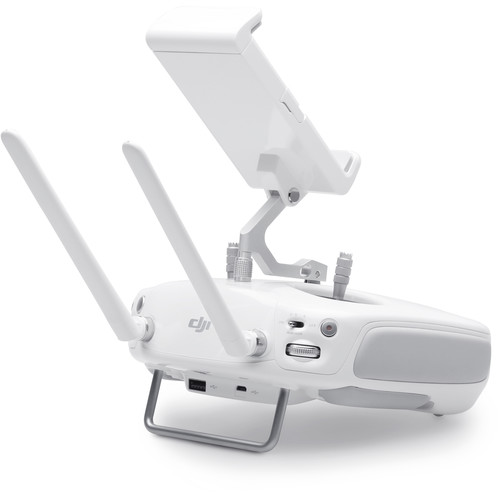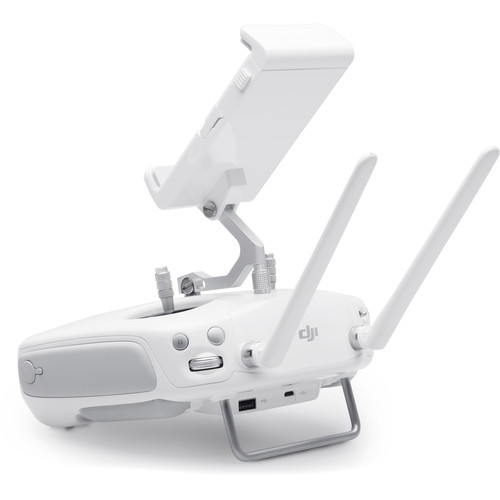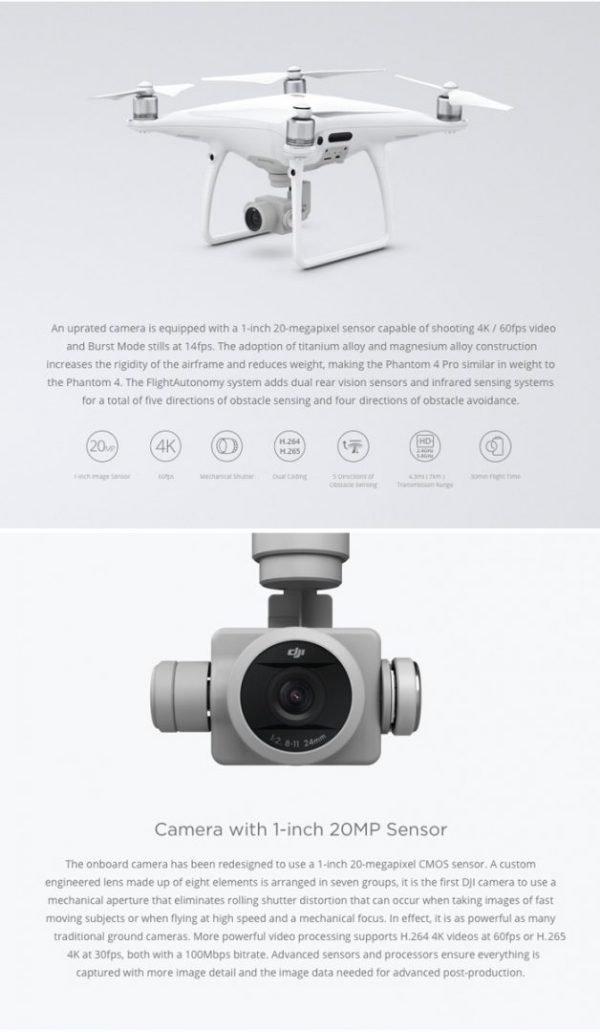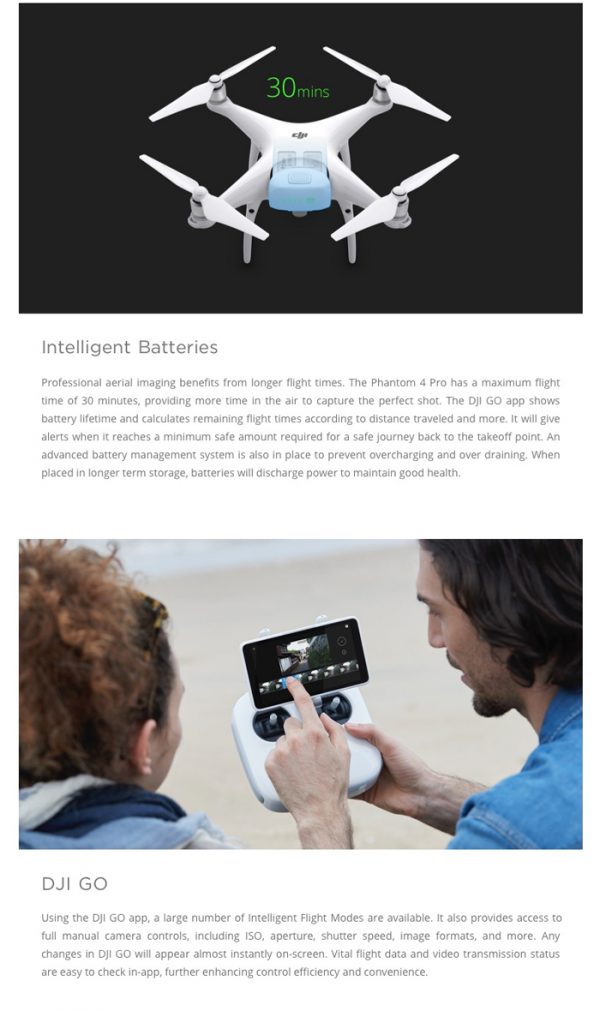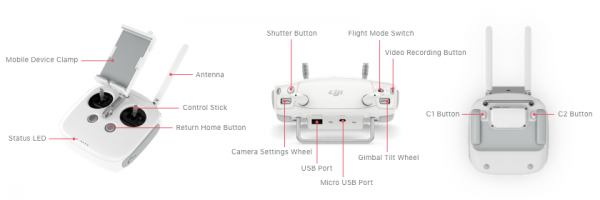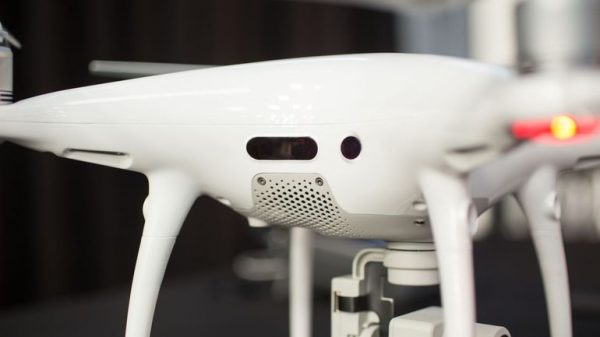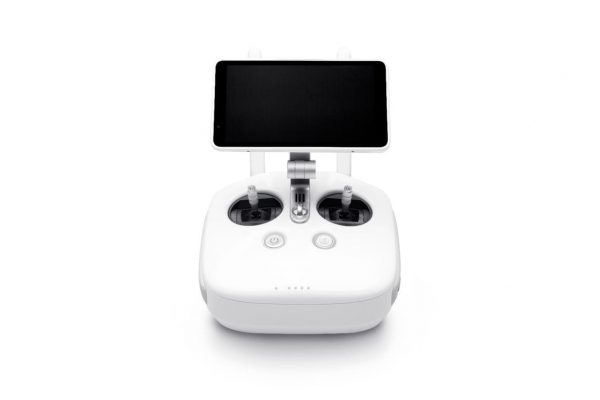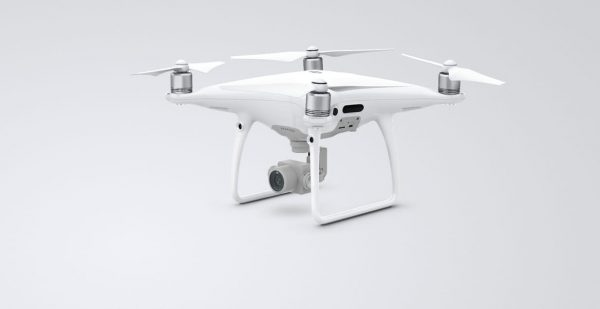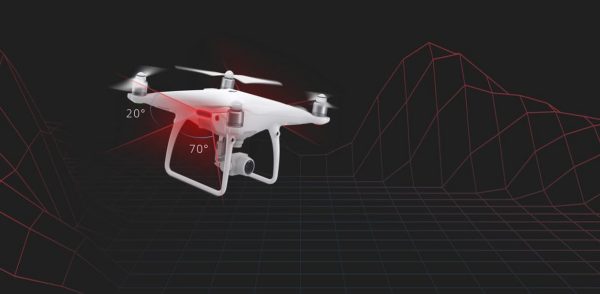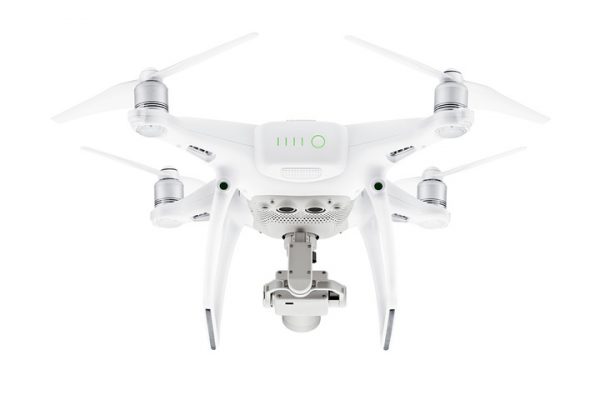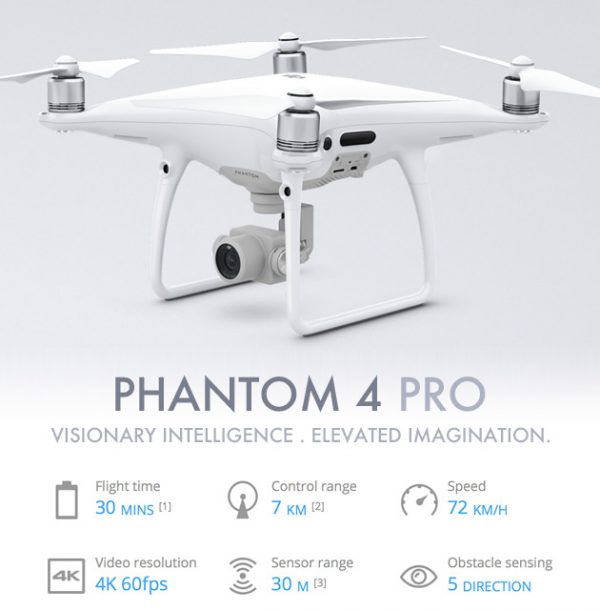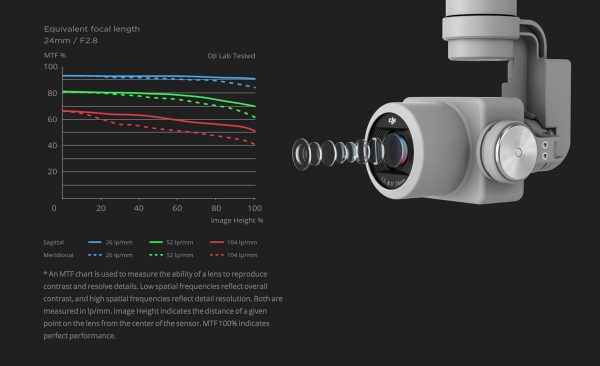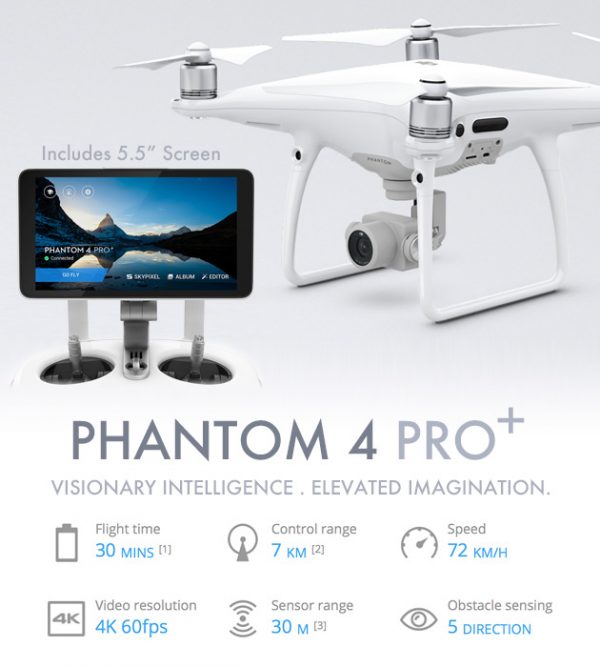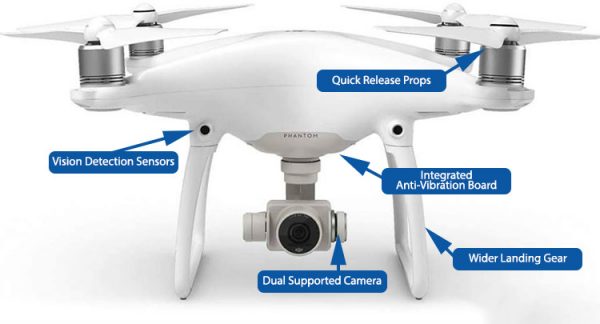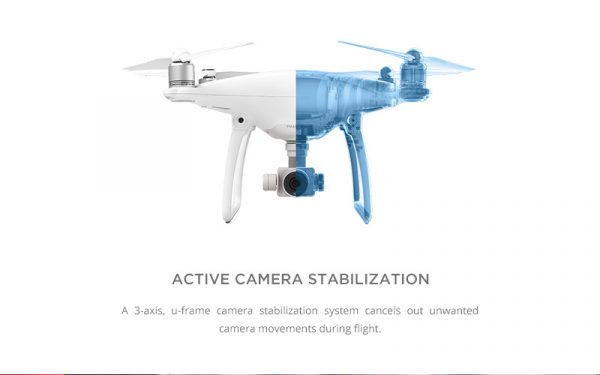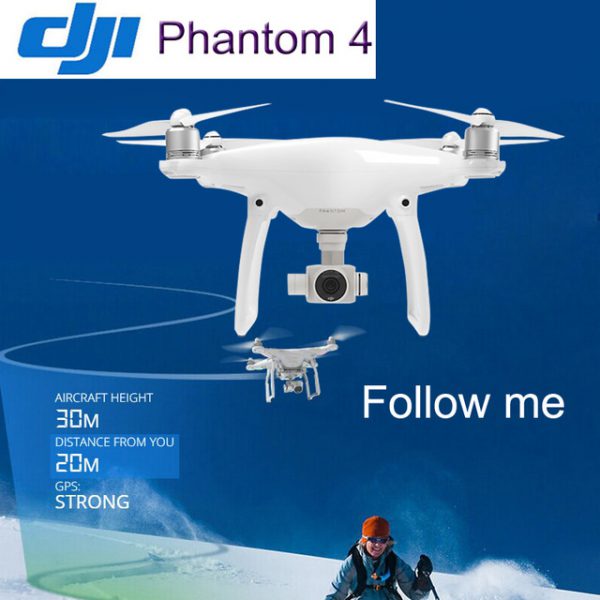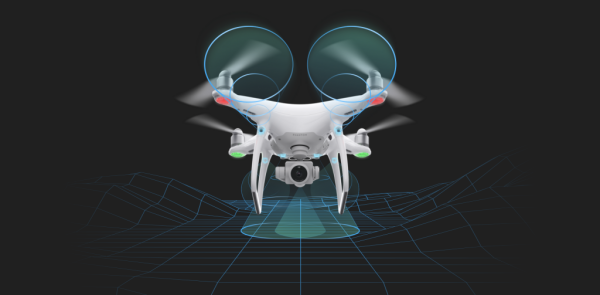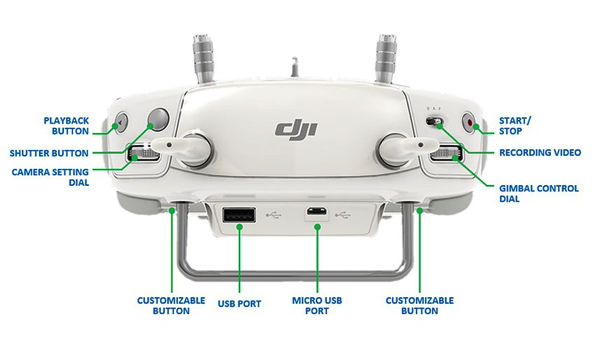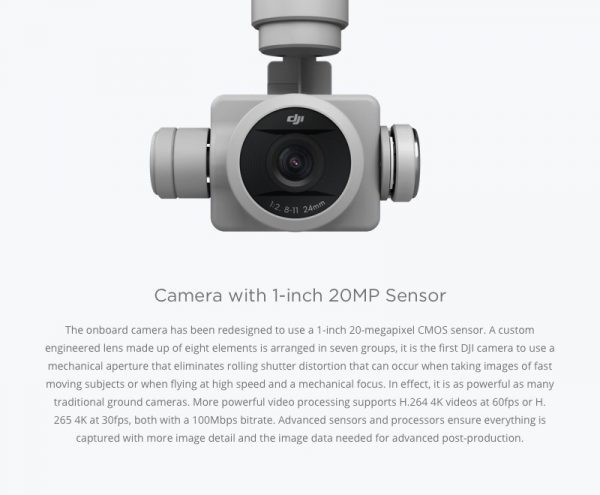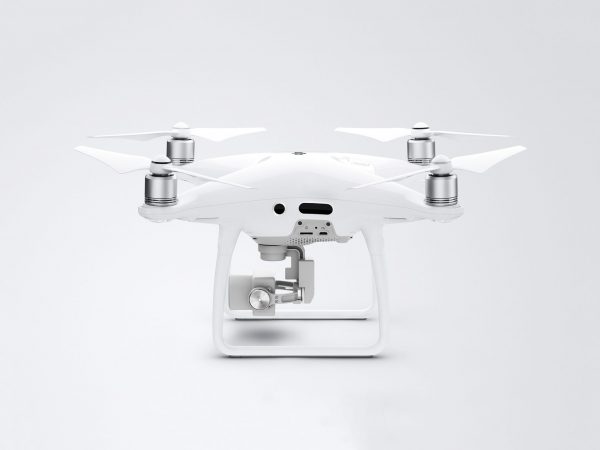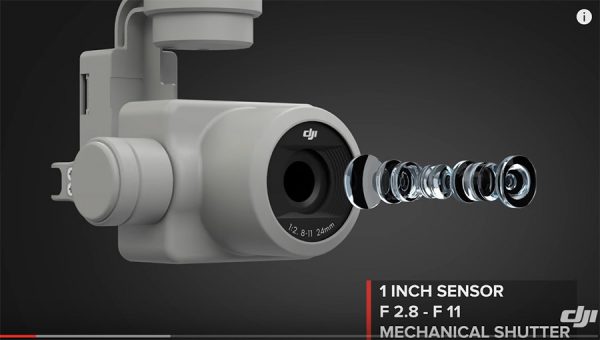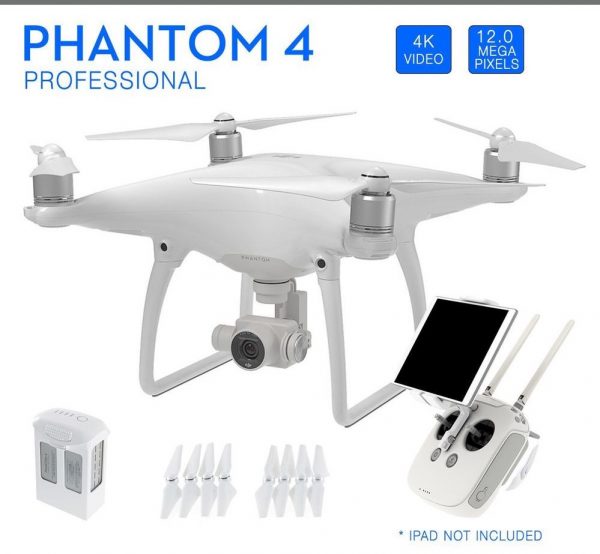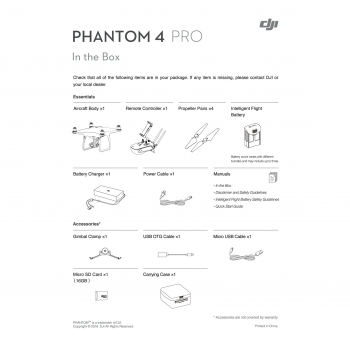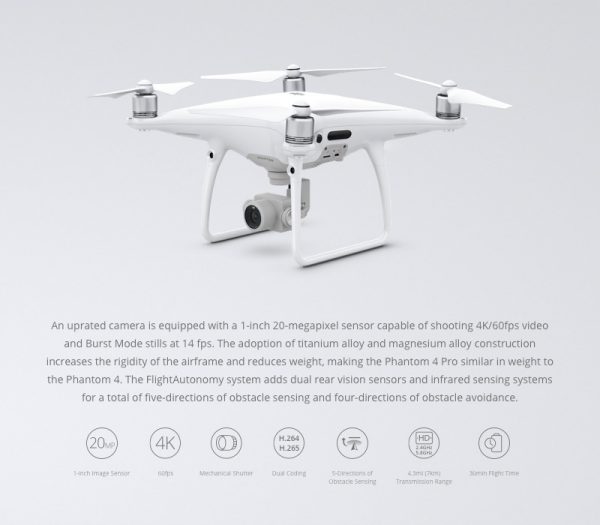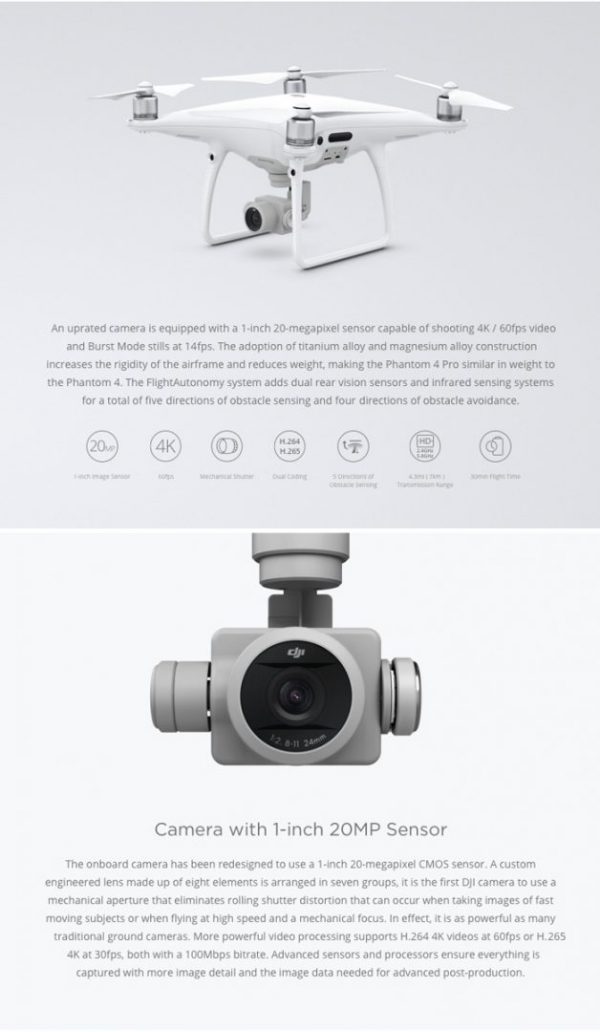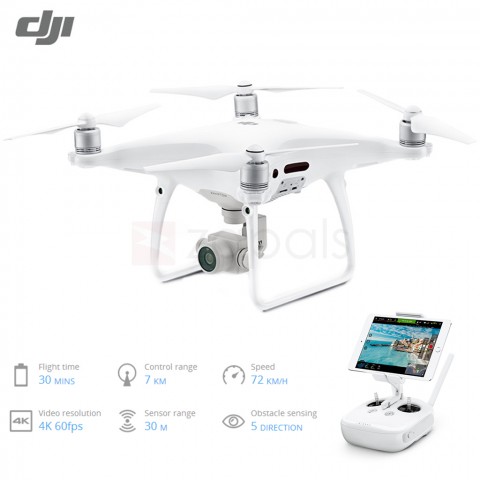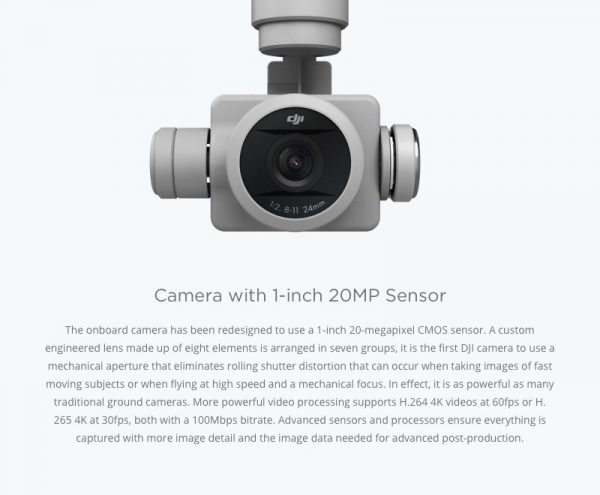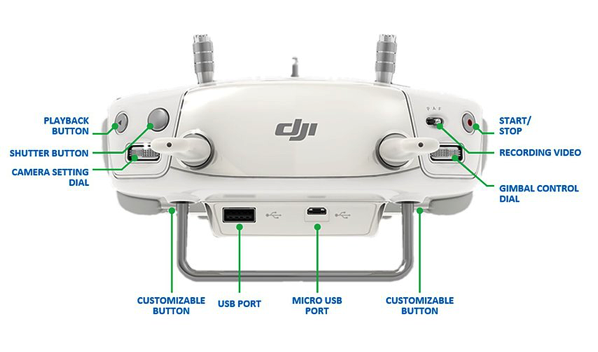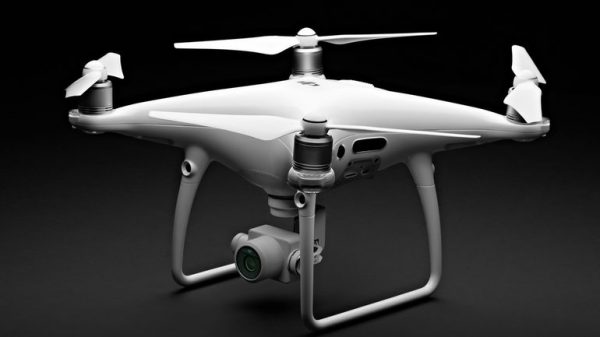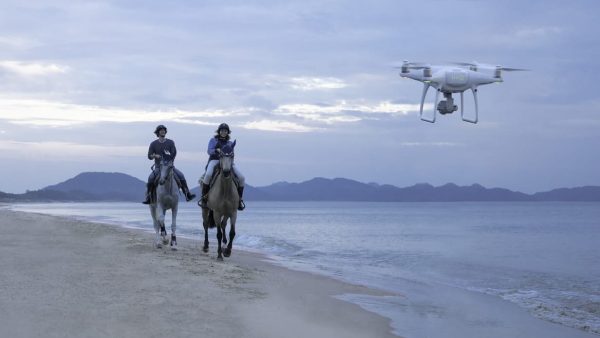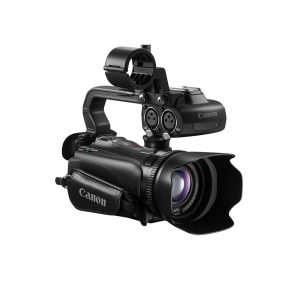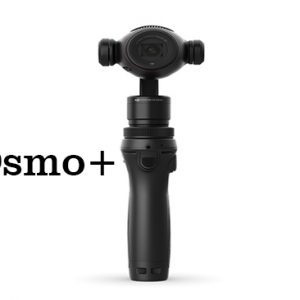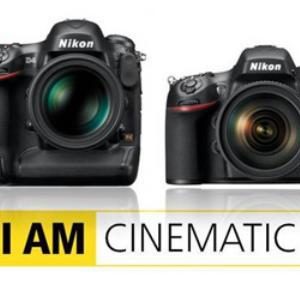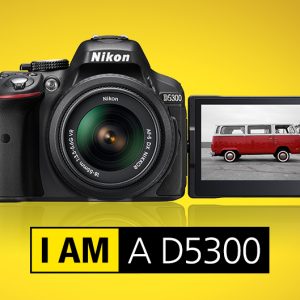DJI Phantom 4 Pro Quadcopter
PRODUCT HIGHLIGHTS
- 1″ 20MP CMOS Sensor
- Gimbal-Stabilized 4K60 / 20MP Imaging
- FlightAutonomy with Redundant Sensors
- Four Directions of Obstacle Avoidance
- Top Speed of 45 mph in Sport Mode
- Maximum Control Range of 4.3 Miles
- Visual Tracking of Moving Subject
- TapFly – Fly With a Tap of the Finger
- Up to 30 Minutes Flying Time
- Remote Controller Included
|
||
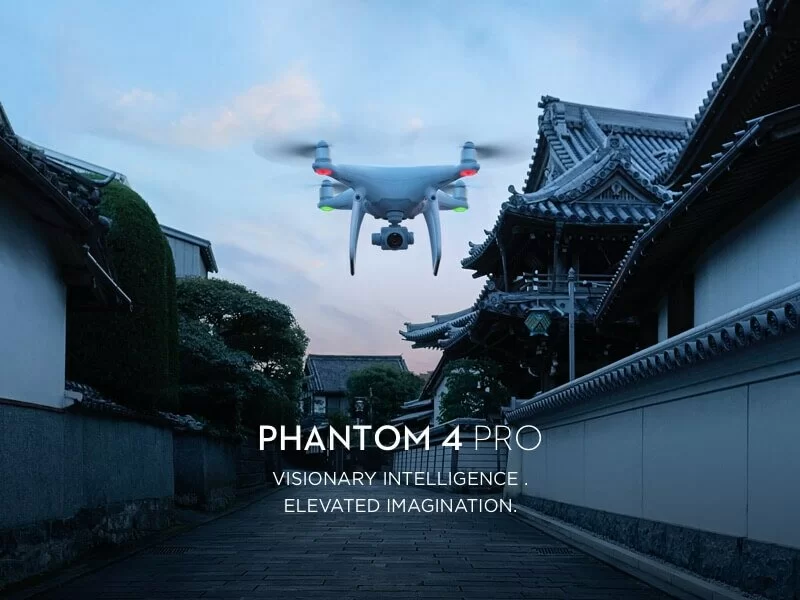

The Most Powerful Phantom Ever – the DJI Phantom 4 ProAll-new DJI Phantom camera with 1-inch 20MP Exmor R CMOS sensor, longer flight time and smarter features. Phantom 4 Pro Highlights
Introduction to the Phantom 4 Pro DJI Phantom 4 Pro – Sharper Vision
Specifications :
In the box (Excludes Display) :
|
DJI PHANTOM 4 PRO VS MAVIC PRO VS PHANTOM 4

DJI’s Control / Create Event had the drone community whipped up into a frenzy.
What would they unveil? Why had they chosen Warner Bros. Studio?
The big money was on the Inspire 2 but before they even got around to unveiling the new iteration of their ‘workhorse’ range, they surprised everyone by revealing the Phantom 4 Professional.
Building on their already impressive Phantom 4 quadcopter, the P4 Pro is packed with autonomous functionality, improved obstacle avoidance and a spectacular camera.
Now that we have a new entrant into DJI’s Phantom series, it’s time for another VERSUS article to see how the newcomer fares against its predecessor and also the source of much excitement (and frustration) the Mavic Pro.
So scroll down to find out our results or, if you’re looking for something more specific, use the navigation menu below.
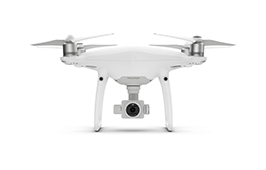 DJI P4 PRO |
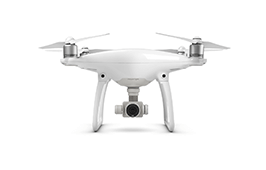 DJI PHANTOM 4 |
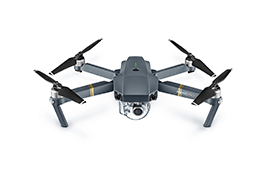 DJI MAVIC PRO |
Maximum Speed |
45 mph (72 kph) (S-mode)
36 mph (58 kph) (A-mode)
31 mph (50 kph) (P-mode)
|
20 m/s (Sport mode) | 40 mph (65 kph) in Sport mode without wind |
Weight |
1388 g
(incl. battery and propellers)
|
1380 g
(incl. battery and propellers)
|
743 g
(incl. gimbal cover, battery and propellers)
|
Flight Time |
Approx. 30 minutes | Approx. 28 minutes | Max. 27 minutes |
Maximum Distance |
2.400 GHz – 2.483 GHz (Unobstruoted, free of interference)
FCC: 4.3mi (7km);
CE: 2.2mi (3.5km);
SRRC: 2.5mi (4 km)
5.725 GHz – 5.825 GHz (Unobstruoted, free of interference)
FCC: 4.3mi (7km);
CE: 1.2mi (2 km);
SRRC: 2.5mi (4 km)
|
FCC Compliant:
5 km
CE Compliant:
3.5 km (Unobstructed, free of interference )
|
8 mi (13 km, 0 wind) |
Maximum Flight Altitude |
6000 m | 6000 m | 5000 m |
VISION SYSTEM
Velocity Range |
≤31 mph (50 kph) at 6.6 ft (2 m) above ground | ≤10 m/s (2 m above ground) | ≤22.4 mph (36 kph) at 6.6 ft (2 m) above ground |
Altitude Range and Operating Range |
0 – 33 feet (0 – 10 m) | 0 – 33 feet (0 – 10 m) | 1 – 43 feet (0.3 – 13 m) |
Obstacle Sensory Range |
2 – 98 feet (0.7 – 30 m)
Infrared Sensing System:
0.6 – 23 feet (0.2 – 7 m) |
2 – 49 feet (0.7 – 15 m) | Precision measurement range: 2 feet (0.7 m) to 49 feet (15 m)
Detectable range: 49 feet (15 m) to 98 feet (30 m)
|
Operating Environment |
Surfaces with clear patterns and adequate lighting (> 15 lux)
Infrared Sensing System:
Surface with diffuse reflection material, and reflectivity > 8% (such as wall, trees, humans, etc.) |
Surface with clear pattern and adequate lighting (Lux > 15) | Surface with clear pattern and adequate lighting (Lux > 15) |
REMOTE CONTROLLER
Operating Frequency |
2.400-2.483 GHz and 5.725-5.825 GHz | 2.4 GHz to 2.483 GHz | 2.4 GHz to 2.483 GHz |
Battery |
6000mAh LiPo 2S | 6000 mAh LiPo 2S | 2970mAh |
Transmitter Power (EIRP) |
2.400 GHz – 2.483 GHz
FCC: 26 dBm; CE: 17 dBm; SRRC: 20 dBm
5.725 GHz – 5.825 GHz
FCC: 28 dBm; CE: 14 dBm; SRRC: 20 dBm
|
FCC: 23 dBm, CE: 17 dBm | FCC:≤26 dBm, CE:≤20 dBm |
Operating Voltage |
1.2A @7.4V | 1.2A @7.4V | 950mA @ 3.7V |
Video Output Port |
Phantom 4 Pro
USB
Phantom 4 Pro+
HDMI, USB
|
N/A | N/A |
Display |
Phantom 4 Pro
Tablets and smartphones
Phantom 4 Pro+
Built-in display device (5.5 inch screen, 1920×1080, 1000 cd/m2, Android system, 4G RAM+16G ROM)
|
Tablets and smartphones | Mobile devices
Thickness Supported:6.5-8.5mm
Max length: 160mm
Supported USB port types: Lightning, Micro USB(Type-B),USB(Type-C)
|
BATTERY
Weight |
468 g | 462 g | 240 g |
Capacity |
5870 mAh | 5350 mAh | 3830 mAh |
Voltage |
15.2 V | 15.2 V | 11.4 V |
Type |
LiPo 4S | LiPo 4S | LiPo 3S |
Energy |
89.2 Wh | 81.3 Wh | 43.6 Wh |
Charger Voltage |
17.4 V | 17.4 V | 13.05 V |
CAMERA
Sensor |
1″ CMOS | 1/2.3″ CMOS | 1/2.3″ CMOS |
Effective Pixels |
20 M | 12.4 M | 12.35 M |
Lens |
FOV (Field of View) 84°, 8.8 mm / 24 mm (35 mm format equivalent), f/2.8 – f/11, auto focus at 1 m – ∞ | FOV 94°, 20 mm (35 mm format equivalent) f/2.8, focus at ∞ | FOV 78.8° 28 mm (35 mm format equivalent) f/2.2, Distortion < 1.5% Focus from 0.5 m to ∞ |
ISO Range |
Video: 100 – 3200 (Auto); 100 – 6400 (Manual)
Photo: 100 – 3200 (Auto); 100- 12800 (Manual)
|
100-3200 (video), 100-1600 (photo) | 100-3200 (video), 100-1600 (photo) |
Shutter Speed |
8s-1/2000s (Mechanical), 1/2000s-1/8000s (Electronic) | 8s-1/8000s | 8s-1/8000s |
Image Max Size |
3:2 Aspect Ratio: 5472 × 3648
4:3 Aspect Ratio: 4864 × 3648
16:9 Aspect Ratio: 5472 × 3078
|
4000×3000 | 4000×3000 |
Still Photography Modes |
Single Shot
Burst Shooting: 3 / 5 / 7 / 10 / 14 frames
Auto Exposure Bracketing (AEB): 3/5 bracketed frames at 0.7EV Bias Interval: 2 / 3 / 5 / 7 / 10 / 15 / 30 / 60 s
|
Single shot
Burst shooting: 3 / 5 / 7 frames
Auto Exposure Bracketing ( AEB ): 3 / 5 bracketed frames at 0.7 EV Bias
Timelapse
HDR
|
Single shot
Burst shooting: 3 / 5 / 7 frames
Auto Exposure Bracketing (AEB): 3/5 bracketed frames at 0.7 EV Bias Interval
|
Video Recording Modes |
H.265
C4K:4096×2160 24 / 25 / 30p @100Mbps
4K:3840×2160 24 / 25 / 30p @100Mbps
2.7K:2720×1530 24 / 25 / 30p @65Mbps, 2720×1530 48 / 50 / 60p @80Mbps
FHD:1920×1080 24 / 25 / 30p @50Mbps, 1920×1080 48 / 50 / 60p @65Mbps, 1920×1080 120p @100Mbps
HD: 1280×720 24 / 25 / 30p @25Mbps, 1280×720 48 / 50 / 60p @35Mbps, 1280×720 120p @60Mbps
H.264
C4K:4096×2160 24 / 25 / 30 / 48 / 50 / 60p @100Mbps
4K:3840×2160 24 / 25 / 30 / 48 / 50 / 60p @100Mbps
2.7K:2720×1530 24 / 25 / 30p @80Mbps, 2720×1530 48 / 50 / 60p @100Mbps
FHD:1920×1080 24 / 25 / 30p @60Mbps, 1920×1080 48 / 50 / 60 @80Mbps, 1920×1080 120p @100Mbps
HD: 1280×720 24 / 25 / 30p @30Mbps, 1280×720 48 / 50 / 60p @45Mbps, 1280×720 120p @80Mbps
|
UHD: 4096×2160 (4K) 24 / 25p, 3840×2160 (4K) 24 / 25 / 30p, 2704×1520 (2.7K) 24 / 25 / 30p
FHD: 1920×1080 24 / 25 / 30 / 48 / 50 / 60 / 120p
HD: 1280×720 24 / 25 / 30 / 48 / 50 / 60p
|
C4K: 4096×2160 24p
4K: 3840×2160 24 / 25 / 30p
2.7K: 2704×1520 24 / 25 / 30p
FHD: 1920×1080 24 / 25 / 30 / 48 / 50 / 60 / 96p
HD: 1280×720 24 / 25 / 30 / 48 / 50 / 60 / 120p
|
Video Storage Bitrate |
100 Mbps | 60 Mbps | 60 Mbps |
Photo |
JPEG, DNG (RAW), JPEG + DNG | JPEG, DNG (RAW) | JPEG, DNG |
Video |
MP4/MOV (AVC/H.264;HEVC/H.265) | MP4, MOV (MPEG-4 AVC/H.264) | MP4, MOV (MPEG-4 AVC/H.264) |
Supported SD Card Types |
Micro SD, Max Capacity: 128GB, Write speed ≥15MB/s, class 10 or UHS-1 rating required | Micro SD, Max capacity: 64 GB. Class 10 or UHS-1 rating required | Micro SD, Max capacity: 64 GB. Class 10 or UHS-1 rating required |
Phantom 4 Pro v Mavic Pro v Phantom 4: Key Features
When you’re looking to invest in a quadcopter, the three names that will be filling your shopping feeds right now will be the DJI Mavic Pro, Phantom 4 and the Phantom 4 Pro. Heliguy has put together a guide allowing you to see their key features side by side which will allow you to make an informed decision. Without further ado, let’s see which of these drones comes out on top.
1. WHAT’S INCLUDED?
Here’s what you can expect from the DJI Mavic Pro, Phantom 4 Professional and the original Phantom 4 out of the box:
What’s Included?
 DJI Phantom 4 Pro |
|
|
 DJI Phantom 4 |
 DJI Mavic Pro |
|
2. APPEARANCE

Most of our readers will be familiar with the DJI Phantom 4. It’s a sleek, well-designed quadcopter that has advanced the aesthetic of DJI’s hugely popular Phantom range. An attractive matte white body broken up by the metallic finish on the motors sits above the 4K camera which is attached to a grey undercarriage. This is all held up by a pair of sturdy legs which also contain the drone’s intelligent collision avoidance sensors.
The Phantom 4 Pro doesn’t fix what isn’t broken and retains a similar aesthetic to the original Phantom 4. The main differences you’ll notice are a redesigned integrated 3-axis gimbal and the addition of obstacle avoidance sensors on the side and back of the aircraft pitched by DJI as Five-Direction Optical Sensing. The main change in design comes with the Phantom 4 Pro+ which features an all new remote controller with an integrated 1000nit tablet optimised for use with the DJI GO 4 app.
Then there’s the DJI Mavic Pro, featuring a showstopping new design incorporating innovative folding functionality. As is to be expected, this new release continues the trend of DJI learning from their previous models and the Mavic also benefits from the solid construction & high-quality materials synonymous with the Shenzhen brand. There’s also a new intuitive and ergonomically enhanced controller with dual display ensuring fewer distractions on your device’s camera view.
All sharp lines and metallic grey, you can tell the Mavic is superbly aerodynamic before you’re even seen it in the air. When it’s folded away, you’ll be left wondering how DJI have managed to pack in all the functionality, with videos online showing people literally putting it in their pocket. There’s also the camera and the optional clear housing which offers some protection for the lens and 3-axis gimbal when in transit or adverse conditions, rounding off the attractive aesthetics.
3. PERFORMANCE

The Phantom 4 is the result of years of R&D from DJI, creating the smartest quadcopter currently available. With a huge range of features including ActiveTrack (which enables it to intelligently follow moving subjects) and TapFly (which allows one touch take-off and landing, all while benefitting from DJI’s obstacle avoidance) the Phantom 4 offers undeniable variety and quality. There are also flight features such as ‘Sport Mode’ which allows the P4 to reach speeds of up to 45mph.
With an impressive array of functionality including the ability to intelligently avoid obstacles as well as being exceptionally easy to use, the Phantom 4 is a very high-quality quadcopter which is also becoming increasingly affordable.
However, flying ahead of even the Phantom 4 is the Mavic Pro which contains much of the same functionality as the P4 such as ActiveTrack and TapFly, as well as new features like TerrainFollow in a smaller, more portable package. The fact that the arms fold flush into the drone’s body thanks to some brilliant engineering from DJI ensures that it’s impressively small and easy to transport.
The Mavic Pro also comes with a Sports Mode allowing it to reach speeds of up to 40mph in optimal conditions. This speedy feature has been advertised alongside a new product ‘DJI Goggles’ which allow for a VR FPV drone flying experience, evidence of DJI edging towards the racing market. As for ease of use, the Mavic is already being called one of the simplest drones to get to grips with. While there is plenty of depth available for seasoned flyers looking for an easily portable aerial camera, it’s also ideal for those just starting out with its advanced visual positioning and obstacle avoidance (up to a range of 15m, even better than the P4).
The Phantom 4 Professional is the new pinnacle of performance in DJI’s smaller quadcopter range. It can fly at up to 31mph with obstacle avoidance enabled, so you can benefit from high-speed shots in any direction, without worrying that you’ll crash your drone. You can also switch to ‘Sport’ mode for faster flight, but you’ll need to be very careful as there’s no sort of obstacle detection available in this setting which can reach speeds of up to 45mph.
Note: The Phantom 4 Pro and Mavic Pro now require a new version of the DJI GO app ‘DJI GO 4’ which will be available on both Android and iOS devices by the end of 2016.
While the Phantom 4 Pro has all the modes you’ll recognise from its predecessor, there are also some new and enhanced features. ‘Narrow Sensing’ makes it possible to fly through tight environments and there’s also a ‘Draw’ mode, which lets you draw a line path on a map for the Pro to follow. ActiveTrack has also been enhanced so that it can work backwards or sideways. Likewise, TapFly lets you fly backwards now and supports ‘Free’ mode, which rotates the aircraft as it moves along its path, without changing flight direction.
4. BATTERY LIFE

With a powerful 5,350mAh battery, the Phantom 4 can stay in the air for almost 30 minutes. However, bear in mind that achieving a maximum flight time depends on suitable weather conditions. There’s also the fact that the extensive range of features can also be a drain on the power supply, so keep this in mind when operation the Phantom 4.
The Phantom 4 Professional runs a similar battery to the original, however, it has been slightly upgraded to 15.2V 5870 mAh, keeping the aircraft flying for up to 30 minutes.
The Mavic is powered by a purpose-built Intelligent Flight Battery (3,830mAh) featuring built-in sensors and LEDs that display the status and remaining power. Despite the smaller power source, the Mavic is able to remain airborne for up to 27 minutes which rivals the Phantom 4.
5. CAMERA SPECS
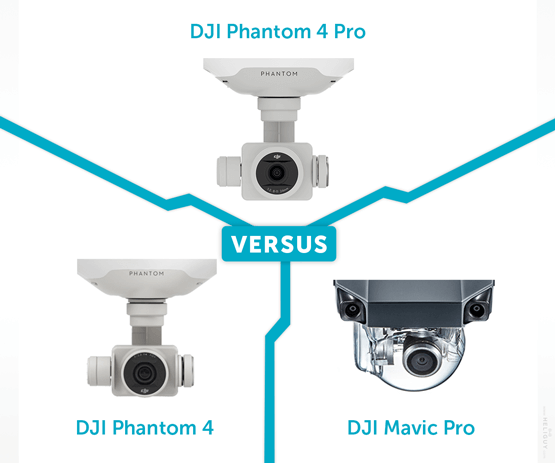
DJI’s Phantom 4 comes with an impressive 4K camera which enables it to achieve great ISO levels and allows for still images at 12MP quality. These stills offer vibrant colour in both RAW and JPEG formats. When it comes to video, the Phantom 4 offers 4096×2160 pixels at 25fps and 4K UHD at 30fps. If you don’t need the full 4K treatment, there’s also the option shoot in 2K and Full HD as well as 720p HD, the latter of which is fed to your controller in real-time.
The Phantom 4 also includes two front mounted visual sensors which enable its obstacle avoidance mode and ensure that as long as it’s facing forward, you’re prevented from flying into anything that could damage the aircraft.
Featuring DJI’s smallest ever stabilised 3-axis integrated gimbal and camera, the DJI Mavic Pro is capable of shooting in 4K and 12MP with Adobe DNG RAW functionality. There’s also a new ‘Gesture Mode’ which allow you to command the Mavic to take pictures with a wave of your hand and a ‘Tripod Mode’ which ensures that every manoeuvre becomes precise and slow for optimum shot quality. One thing to note is that you can expect a narrower FOV than you’ll get from the Phantom 4 but far from being a drawback, this ensures a higher level of image quality.
The Mavic includes additional sensors which are refined versions of the P4’s obstacle avoidance solution and the visual positioning introduced with the Inspire 1 range. Utilising these sensors, it has one of the most stable stationary hovers you’ll see from any drone on the market.
Then we come to the Phantom 4 Professional.
This quadcopter’s camera races past the other two in terms of quality. Images are captured at 20MP in JPG or RAW DNG, with video available up to 4K quality at 60fps. 30 and 24fps shooting rates are also available. The camera also adds aperture control and features a mechanical shutter, eliminating the rolling shutter effect you sometimes get from electrical alternatives. Footage is compressed at 100Mbps using H.265 compression, up from the H.264 60Mbps format offered by the Phantom 4.
The new camera (and improved sensors) also allows you to access the gesture control functionality introduced with the Mavic Pro as well as a range of other features such as Draw and Advanced Return to Home. This increased functionality is being welcomed by aerial videography companies such as UK-based DGTL Concepts.
There’s also the Five-Direction Optical Sensor array which allows for front, side and back obstacle avoidance (Range: front and back- 98ft, sideways- 23ft) as well as the vision positioning sensors which detect anything below the aircraft
How To Buy

| brands | DJI |
|---|---|
| color | White |
| Condition | |
| Lens Kit | Sensor : 1’’ CMOS; Effective pixels: 20M |

